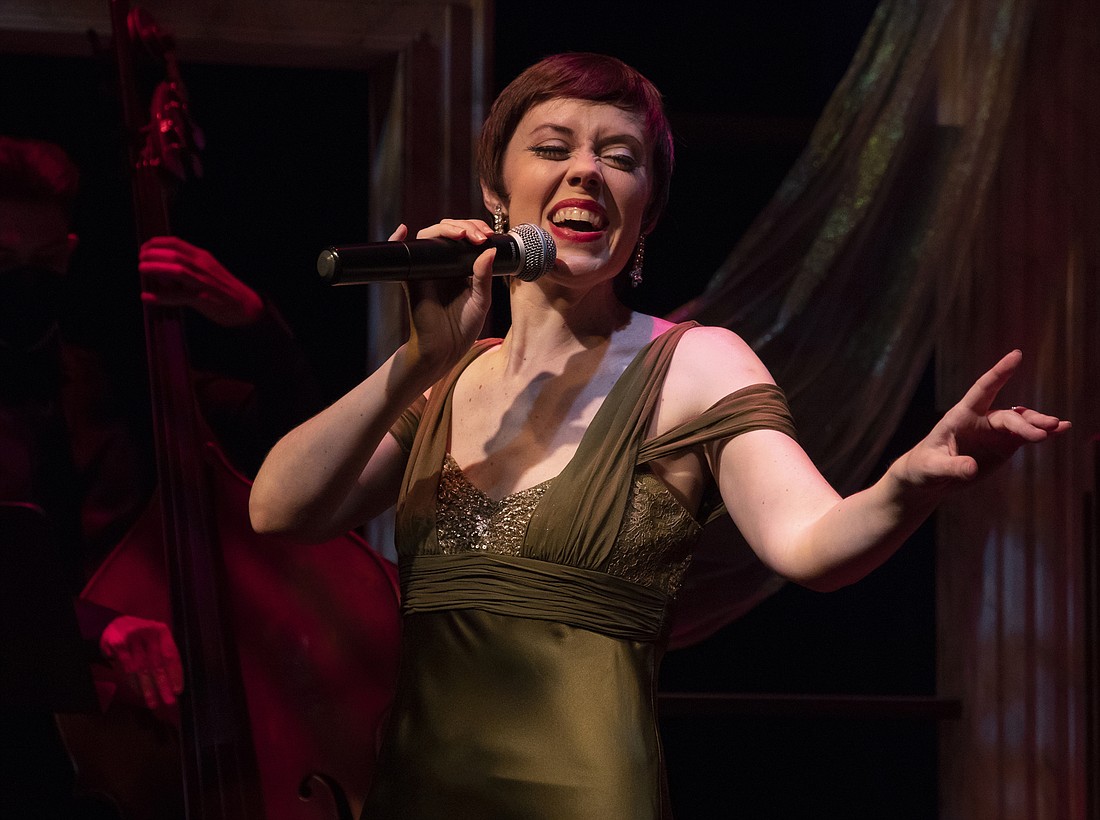- December 21, 2025
-
-
Loading

Loading

The FST cabaret stage has been dark for months. It’s fitting that Carole J. Bufford is bringing the electricity back with her latest revue—“Vintage Pop!” She’s a powerhouse vocalist and a real live wire. As you might expect, it’s a high-voltage concert.
“Vintage Pop!” traces pop music’s evolutions and revolutions from the Roaring Twenties to the Big Eighties. Bufford created the show, and shares arrangement credit with Ian Herman. She also sings the songs, with Isaac Mingus on bass and Jim Prosser on piano.
Bufford’s revue deftly mingles anthems and anecdotes. She also plays with genre expectations, and turns a few old songs inside-out so you’ll hear them in a new way. She notes that, “The proof of a good song is you can bend it and it still won’t break.”
Bufford kicks off Act I with “Everything Old is New Again,” (1974) and dials the clock back to the dawn of the 20th century to prove how flexible the old songs can be. She dusts off chestnuts like “Won’t You Come Home Bill Bailey?” (1902) and traces the drunkard’s walk of its origin.
Bufford also spotlights Sophie Tucker’s systematic appropriation of African-American music. (And relates the incident where Tucker refused to be snubbed by President Calvin Coolidge and his Secret Service entourage — and risked federal prison when she blocked his path with, “Hey Cal! How about a handshake for a loyal taxpayer?”)
ore fun facts ensue. You find out that “Blue Moon” (1934) had several lyrical mutations before entering its final phase. How associate producer Arthur Freed stood up to Louis B. Mayer to keep “Somewhere Over the Rainbow” in “The Wizard of Oz.” And also how one of the Nazis’ favorite swing tunes — The Andrews Sisters’ “Bei Mir Bist Du Schoen” (1932) — started out as a Yiddish ballad. The Nazis banned the record when they found out — and only made it more popular.
Act II opens with the oscillations of the sultry “Sway” (1953). Bufford then quotes Sister Rosetta Tharpe’s observation that, “Oh, these kids and rock and roll — that’s just sped up rhythm and blues. I’ve been doing that forever.” To prove that point, she slows down Jerry Lee Lewis’ “Whole Lotta Shakin’ Goin’ On” (1955). (The result is pure R&B—QED.) Bufford also belts out “C’est La Vie: You Never Can Tell” (1964) — and beautifully quotes the dance moves of Uma Thurman’s character when she shimmied to that tune in Quentin Tarantino’s “Pulp Fiction. (And while we’re piling on the Tarantino references, Bufford’s take on “California Dreamin’ (1965) seems inflected by José Feliciano’s cover.)
In her rendition of “Every Breath You Take” (1983) you find out that Sting composed his creepy, stalker anthem on Ian Fleming’s writing desk at Goldeneye — the late author’s estate on a beach in Jamaica. (Bufford performs this number with an over-the-top Bond girl flourish.) She closes the set with the ode to self-examination and repentance of “Man in the Mirror” (1988), and the hope of healing the world of “There’ll Be Some Changes Made” (1921).
Along with making music, Bufford lights up the room in a succession of period dresses of her own choosing. Pianist Prosser and bassist Mingus both get a chance to shine, too — Bufford’s a generous performer, and never hogs the spotlight. Props also to Nick Jones’ lighting, Bruce Price’s set, and Thomas Korp’s sound design.
It adds up to an outstanding concert — not only technically excellent, but heartfelt. This shimmering show doesn’t make up for the wait. But it doesn’t disappoint. And that proves one final point …
The pandemic has bent the theater community but not broken it. It’s great to see the electricity flowing again.